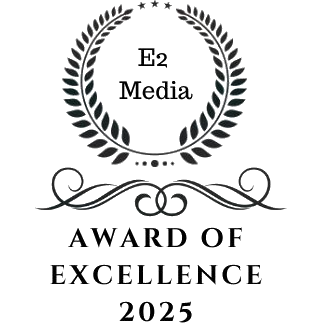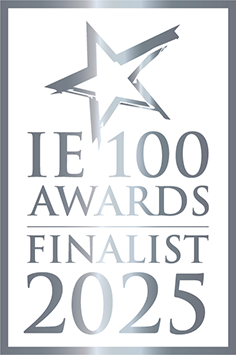
In today’s social media space , social media platforms like TikTok and Instagram are not just tools for social interaction but marketing battlegrounds for attention and influence. As these platforms evolve, understanding the differences between them becomes crucial for anyone looking to engage effectively with their audience. This article explores the “TikTok Vs Instagram” debate, exploring how each platform caters to its user base, the unique features they offer, and the different strategies content creators and businesses can employ to maximize their online presence.
Both TikTok and Instagram have carved out significant niches in the social media space, each offering distinct approaches to content creation, sharing, and community building. By comparing these platforms, we aim to provide insights that will help users and marketers make informed decisions about where to invest their time and resources for the best engagement and return. Whether you are a budding influencer, a seasoned marketer, or just curious about the differences between these two powerhouses, understanding their strengths and weaknesses is key to navigating the complex social media environment today.
Evolution And Core Features Of TikTok And Instagram
TikTok and Instagram have undergone significant evolution since their inception, shaping the way users interact with content and each other online. TikTok burst onto the scene in 2016 as Douyin in China, before expanding globally as TikTok under the parent company ByteDance. Its hallmark feature is short-form video content, allowing users to create and share engaging clips set to music, often incorporating trends, challenges, and memes.
In contrast, Instagram, founded in 2010, initially focused on photo-sharing but has since evolved into a multifaceted platform encompassing photos, videos, stories, reels, and IGTV. Instagram’s interface is designed for visual storytelling, enabling users to curate their feeds with aesthetically pleasing images and videos, and share their daily moments through stories.
Both platforms offer a range of features to enhance user experience and engagement. TikTok’s “For You” page algorithmically serves users an endless stream of content tailored to their interests, keeping them hooked with a constant flow of entertaining videos. Instagram, on the other hand, encourages users to cultivate their online personas through a grid-style feed, where they can showcase their creativity and lifestyle to followers.
Despite their differences, both platforms prioritize user engagement through features like likes, comments, shares, and direct messaging. TikTok’s duets and stitching features enable collaboration and interaction between users, while Instagram’s direct messaging and story replies facilitate more personal communication.
Understanding the evolution and core features of TikTok and Instagram lays the foundation for a deeper exploration of their respective strengths and weaknesses in engaging with audiences and fostering communities.

Audience Demographics
Understanding the demographics of TikTok Vs Instagram users is essential for tailoring content and marketing strategies to effectively reach and engage with the target audience on each platform. While both platforms boast large user bases, their demographics vary significantly in terms of age, location, and interests.
TikTok has gained immense popularity among younger demographics, particularly Generation Z and Millennials. Its short-form video format and emphasis on creativity and entertainment appeal to a younger audience seeking bite-sized content and viral trends. According to recent studies, over 60% of TikTok users are under the age of 30, with the majority falling between the ages of 16 and 24. Additionally, TikTok’s user base is geographically diverse, with significant growth observed in regions outside of its initial launch markets, including the United States, India, and Europe.
In contrast, Instagram attracts a more diverse demographic range, spanning across various age groups, including Millennials, Generation Z, and Generation X. While younger users still make up a significant portion of Instagram’s user base, the platform also appeals to older demographics, with a growing number of users aged 35 and above. Instagram’s visual-centric nature and versatility in content formats, such as photos, videos, and stories, cater to a wide range of interests and preferences. Moreover, Instagram’s user base is more evenly distributed globally, with strong user engagement observed in both urban and rural areas.
Understanding the audience demographics of TikTok Vs Instagram enables content creators and marketers to tailor their messaging, content formats, and advertising strategies to resonate with their target audience effectively. By aligning with the preferences and interests of their audience on each platform, businesses can maximize their reach and engagement potential, driving meaningful interactions and conversions.

Content Creation And User Engagement
Content creation and user engagement are at the core of both TikTok vs Instagram, driving interaction and fostering communities on these platforms. Each platform offers unique features and tools that enable users to express themselves creatively and engage with content in diverse ways.
TikTok, with its emphasis on short-form video content, provides users with a plethora of editing tools, effects, and music options to create engaging and entertaining videos. The platform’s algorithmic feed, known as the “For You” page, algorithmically curates content based on user preferences and engagement, ensuring that users are constantly exposed to content tailored to their interests. This personalised approach encourages users to spend more time on the platform, engaging with videos, participating in challenges, and discovering new content creators.
In contrast, Instagram offers a variety of content formats, including photos, videos, stories, reels, and IGTV. This versatility allows users to curate their feeds with a mix of content that reflects their personality and interests. Instagram’s stories feature, which enables users to share ephemeral content that disappears after 24 hours, encourages spontaneous and authentic engagement with followers. Additionally, features like reels and IGTV provide users with opportunities to create longer-form video content and reach wider audiences.
User engagement on both platforms is facilitated through features such as likes, comments, shares, and direct messaging. TikTok encourages interaction through duets, stitches, and reaction videos, enabling users to collaborate with and respond to each other’s content. Similarly, Instagram fosters engagement through story replies, direct messaging, and interactive stickers, allowing users to connect with each other and share their thoughts and experiences.
Overall, content creation and user engagement are integral aspects of the TikTok and Instagram experience, shaping the way users interact with content and each other on these platforms. By leveraging the unique features and tools offered by each platform, content creators and businesses can create compelling content that resonates with their audience and drives meaningful engagement.
Marketing Strategies: TikTok Vs Instagram
Marketing on TikTok and Instagram requires a tailored approach that takes into account the unique features and user demographics of each platform. While both platforms offer opportunities for businesses to reach and engage with their target audience, the strategies employed may vary depending on the goals and objectives of the marketing campaign.
TikTok, with its predominantly younger audience and focus on short-form video content, presents a vibrant landscape for creative marketing campaigns. Brands can leverage TikTok’s trending challenges, hashtags, and soundtracks to create viral content that resonates with users. Collaborating with TikTok influencers who have a significant following can also amplify the reach and impact of marketing campaigns, as influencers have built-in credibility and influence over their audience.
Moreover, TikTok’s advertising options, including in-feed ads, branded effects, and hashtag challenges, provide businesses with additional avenues to promote their products or services to a highly engaged audience. By incorporating interactive elements and user-generated content into their marketing strategy, brands can foster authentic connections with TikTok users and drive brand awareness and loyalty.
On the other hand, Instagram offers a diverse range of marketing opportunities across its various features, including feed posts, stories, reels, and IGTV. Businesses can leverage Instagram’s visual-centric nature to showcase their products or services through high-quality imagery and engaging captions. Instagram influencers play a significant role in marketing on the platform, with brands often partnering with influencers to promote their products or services to their followers.
Additionally, Instagram’s advertising options, such as sponsored posts, stories ads, and carousel ads, enable businesses to target specific demographics and reach a wider audience. By leveraging Instagram’s targeting capabilities and creative ad formats, brands can create personalised and impactful marketing campaigns that drive engagement and conversions.
In short, effective marketing on TikTok and Instagram requires a deep understanding of each platform’s unique features, user demographics, and advertising options. By tailoring marketing strategies to suit the strengths of each platform, businesses can maximise their reach, engagement, and ROI in the ever-evolving landscape of social media marketing.

Challenges And Limitations Of TikTok And Instagram
While TikTok and Instagram offer numerous opportunities for users and businesses alike, they also present several challenges and limitations that users need to navigate. One of the key challenges on TikTok is the fierce competition for attention, given the platform’s algorithmic nature and the constant influx of new content. With millions of users vying for views and engagement, standing out and building a loyal following can be a daunting task.
Additionally, TikTok’s relatively younger audience demographic may pose challenges for brands targeting older demographics or niche markets. It can be challenging for businesses to create content that resonates with TikTok’s predominantly youthful audience while maintaining authenticity and credibility.
On Instagram, one of the main challenges is the saturation of the platform, with millions of users and businesses competing for attention in users’ feeds. The platform’s algorithm changes and the introduction of features like the Instagram algorithmic timeline can impact organic reach, making it harder for businesses to gain visibility without investing in paid advertising.
Moreover, Instagram’s focus on visual content may present limitations for businesses in industries that are not visually appealing or struggle to create engaging imagery. Finding the right balance between promotional content and authentic storytelling can be a challenge for businesses on Instagram.
Despite these challenges, both TikTok and Instagram remain powerful platforms for reaching and engaging with audiences, and with the right strategies and approach, businesses can overcome these obstacles and leverage the full potential of these platforms for their marketing efforts.

Take Both Sides Of The Coin With Delivered Social
To be successful despite the complexities of TikTok and Instagram marketing, requires expertise and strategic thinking. Delivered Social stands out as the ideal partner to help businesses harness the full potential of these platforms and achieve their marketing goals. With a proven track record of delivering innovative and results-driven digital marketing solutions, Delivered Social offers tailored strategies to maximise engagement, drive conversions, and boost brand visibility on TikTok and Instagram.
Ready to elevate your TikTok and Instagram marketing efforts? Contact Delivered Social today to discover how their expert team can help you develop and implement effective strategies that resonate with your audience and drive tangible results. Don’t miss out on the opportunity to unlock the power of TikTok and Instagram for your business—get in touch with Delivered Social now and take your digital presence to new heights.
Interested In Working Together?
Introducing Delivered Social. We're The Most-Rated Digital Agency In Surrey & Hampshire – We've Got To Be Doing Something Right.
Delivered Social is a digital marketing agency with one mission—to help businesses grow. We're famous in Guildford and Portsmouth for our social clinics. We believe in free advice. We build lasting relationships because our team prides itself on being helpful, which our clients appreciate.
If you are looking for a new website or an agency to manage your social media presence, we can help.
If you need something slightly different, here's a super handy list of all our services, or you can always email us.























